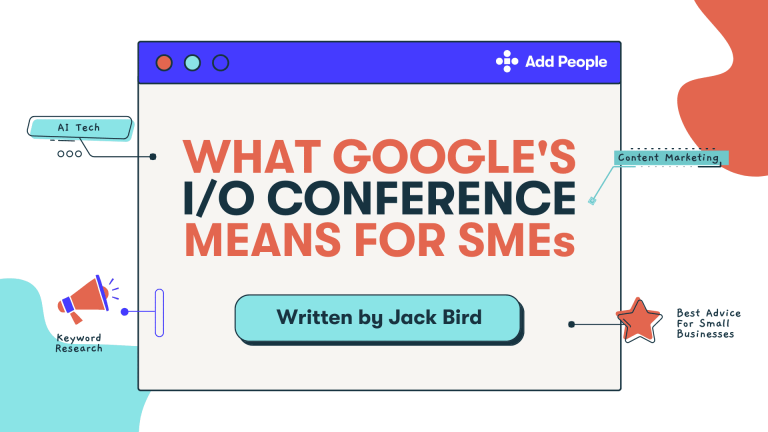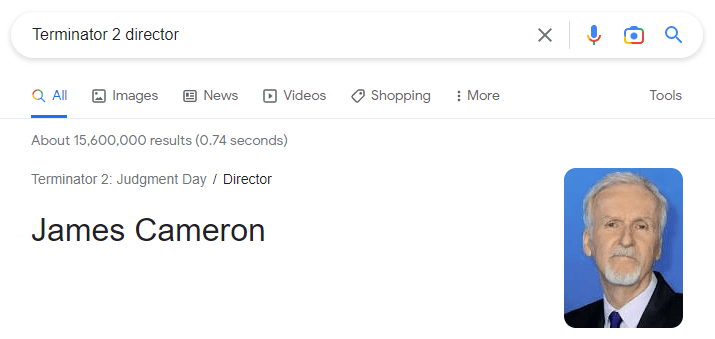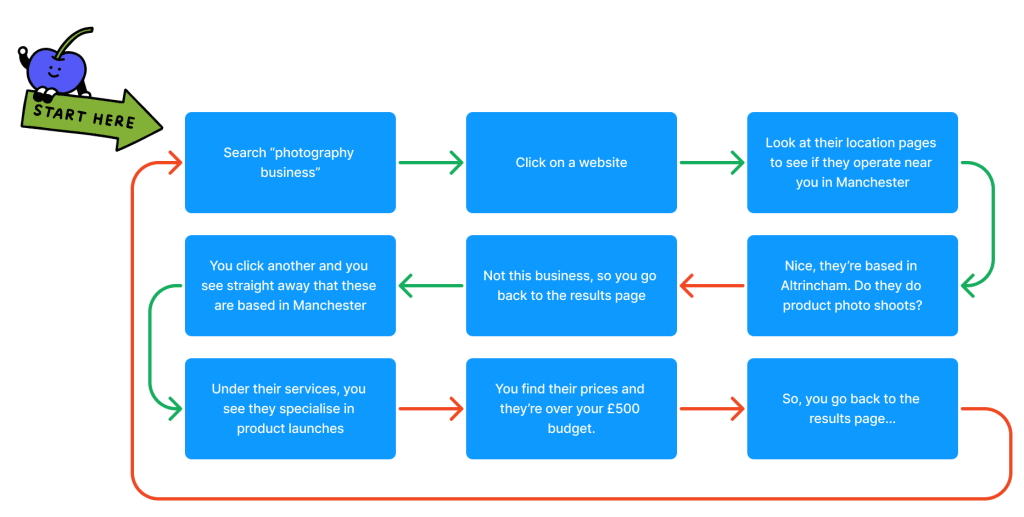What Google’s 2023 I/O Conference Means For SMEs

I went into the 2023 Google I/O conference expecting some talk about artificial intelligence. That wasn’t the case.
It was everywhere.
The company has truly pivoted its entire operations around AI and for a business that has so many projects on the go, this seems to have permeated almost every one of them.
Now, I could sit here and talk about how this advanced LLM (Large Language Model) is super impressive and that the MUM (Multitask Unified Model) it’s using to understand different types of media made me go WTF (wow, that’s fancy).
I won’t, though, because you’re interested in what this all means for our most important acronym at Add People: SMEs.
So, how will this all affect websites that rely on Google for their traffic and revenue? What does this mean for the SEO agency or in-house team delivering work for your website? Surely they’re running out of letters for acronyms any day now?
Well, hello, I’m the company’s Content Operations Manager, Jack Bird. I watched the conference live so you don’t need to. Take a look below for what I think businesses like yours need to know!
To keep in mind… 🧠
Google has a high bar of quality control for the services and technology it introduces to us. While that means products typically come out of the box working, it also means that we normally have to wait a while to get our hands on them. With that in mind, some of these features won’t be coming for years or months.
Still, it’s important to look ahead so you can prepare yourself for what’s coming.
1. How The Search Results Page Will Change
Google have been tweaking their SERPs (search engine results page) for years, taking it from the super-streamlined version of the early 00’s to the feature-rich, snippet-reliant list we see today.
Replacing ads at the top of that mountain will (eventually) be their “AI-powered snapshot”, as they put it on stage. This pulls in information from several different sources, providing much more than the traditional meta title and description we’re used to.
Instead, it will generate a unique, lengthy and conversational response to your request. In one of the examples provided, a search for a family and dog–friendly park nearby led to a four paragraph long comparison of the two options Google thought were most appropriate.
With our new generative AI experience in Search, you’ll get even more from a single search. You’ll be able to quickly make sense of information with an AI-powered snapshot, pointers to explore more and natural ways to ask. #GoogleIO pic.twitter.com/jgzz97DzEv
— Google (@Google) May 10, 2023
However, from this detailed response that Google can provide, you could ‘Ask a follow-up’. For me, this is a huge step in user AI and takes it up a level from the inorganic, stop-start approach we currently have to take.
Context is carried over from previous messages and searches (think of it like a ‘super cookie’), meaning you no longer need to recontextualise searches when you make a new one.
Google has also, as expected following their YMYL (Your Money, Your Life) content initiative which provides more scrutiny on life’s most important topics, established lines they’re drawing. For example, this conversational response won’t provide advice on drugs to take for medical conditions.
So, what does this mean for small to medium-sized businesses?
Businesses should be providing detailed, rich and unique content for users on their websites. Why? Because this will likely help you land more real estate on this new-look results page. More real estate = more traffic.
2. Finally, A Step In Improving Proper Accreditation For AI
You may not know the name, but you’ve probably been making ‘zero-click searches’ for years.
These are searches where Google doesn’t expect the user will want a lengthy article to satisfy them. For example:
– “Michael Jordan age“
– “one dollar in pounds“
– “Terminator 2 director“
– “temperature in Manchester”
So, they provide information ahead of search results distilling what they think the user is looking for down to a minimum.
You don’t need a whole thinkpiece to tell you James Cameron directed Terminator 2, just the name will do.
However, as they pull that content from other websites, they rarely credit them appropriately for it. This new interface looks to change that.
They now provide a point-by-point breakdown of everything they said in their answer, with sources attached to provide context as to why they said it.
It’s not only the search ethics regarding credit that this helps to serve, but the growing fear of misinformation.
You don’t just need to take Google’s word for their advice on how to start your own business online, because you can see links to the articles that support what they’re saying.

This is an example of a ‘zero click’ search result
So, what does this mean for small to medium-sized businesses?
Previously ‘zero click’ searches could start actually leading to traffic for your site as you’ll get credited when your content informs a result. Whether or not this will rely on schema is unclear, but by marking up your content with structured data, you’ll be getting wins in the present day and it’ll do no harm for what comes in the future.
3. Our Search Language Is About To Change
You probably won’t realise, but we often limit the language we use to search, making ourselves sound more robotic so we can speak the language of the robots. We break long searches into multiple short searches, repeating context or removing details that we think would only complicate matters.
However, as search engines get smarter at understanding intent from what we type, we can start to treat them more human; like we’re asking a friend for a quiche recipe instead of a supercomputer.
Imagine you’re looking for a photography business near you to help with a technology product launch for under £500. Your search for a partner may look like this:
(Click the image to zoom in 🔎)

Now, with this new AI-powered search model, you’d be able to tackle all of that in one search:

So, what does this mean for small to medium-sized businesses?
If you provide a product or service that is difficult to explain in a few words, this advanced system will be able to help people find what they’re looking for even when they don’t know what they’re looking for. So, if all goes well, you should be able to expect more traffic if you have quality content on your website.
4. Keyword Research In A Post-I/O Conference World
Now, bear with us, as this might get a little geeky. Keyword research, though, is a huge part of what a digital marketing agency like Add People delivers for clients on a daily basis – and there’s nothing wrong with ‘a little geeky’!
As the last point established, that deeper language capabilities of the engine will massively open up how people search. This means that we’ll go from long tail searches to, for lack of a better term, epic tail searches.
That ‘new search’ provided in the image above clocks in at 21 words, and good look optimising pages for that! There are simply too many variables involved with that many words to find a consistent target.
So, how will this change how ourselves and agencies like Add People deliver content?
My suspicion is that topic clusters will become more important than they already are (aka, very). It will likely be difficult to operate ‘per search’, and instead shifting to a ‘per topic’ approach will mean that you can cast a wider net.
Instead of developing one short page for one keyword, writing one extensive pillar page for hundreds of keywords may be the best approach to cover your bets and all the permutations of searches and intents.
What does this mean for small to medium-sized businesses?
If you’re not already, you should be focusing on developing content clusters and extensive pillar pages on your website. Simply having five or six pages with 200 words each might not cut it anymore, so try building out a blog to establish yourself as an authority and identifying large groups of keywords to target in one page with supporting content.
Listen, we said this would get a little geeky, so just contact us if you need a hand!
5. How The Line Between ‘Information’ And ‘Transaction’ Is Blurring
Searches are often split into different intents, with some informational and some transactional. For example:
– Informational: “what shoes are good for running”
– Transactional: “buy hoka mach 5 running shoe”
With a deeper understanding of nuance, Google will be able pull transactional prompts into informational search results.
This means if you didn’t even know the problem you’re searching about required a product to solve it, Google will likely show you one if that is the answer.
Generative AI capabilities in Search are especially helpful when deciding what to buy. They tap into Google’s Shopping Graph, the world’s most comprehensive dataset of constantly-changing products, sellers, brands, reviews and inventory. #GoogleIO pic.twitter.com/IM8HLV090N
— Google (@Google) May 10, 2023
The key takeaway here is that all of this will be pulled from Google Merchant Centre. You should expect that this will become even more important than it already is. Simply having your product listing online won’t be truly making the most of the toolset available.
If you want this extra attention on the new results page (by the way, you do), then Google will expect everyone to be using their eCommerce platform.
Whether you’re marking your bike listing up with the different colour options available or providing review score schema for the makeup you sell, this is all to make a richer shopping experience for the user.
For lead generation businesses, it’ll be interesting to see how service information is pulled in. With this improved language model, I expect Google will be able to eventually detect prices, service options, etc without you going out of your way to mark it up with schema.
So, what does this mean for small to medium-sized businesses?
If you run eCommerce PPC, you should be listing your products on Google Merchant Centre and expecting a more diverse amount of traffic when this system goes live. With that diversity in mind, you may want to start producing content for people that are new to the very idea of your product/service.
This means that no matter where they are on their customer journey when they get to your site, you can help them convert.
6. Further Clarity Over What Is AI-Generated
We naturally seek content created by humans. Do you ever put “reddit” at the end of a search string, hoping to find a genuine answer provided by humans instead of an optimised result designed for the algorithm?
While that leads to a more genuine search experience, Google’s efforts over AI content clarity is all about making a safer search experience.
Rightfully so, they are fearful of misinformation diluting the knowledge pool they’re building, and one way they want to tackle this is with invisible watermarks.
These will be in the form of metadata, similar to the usual kind of invisible data that all files carry with them. This will clearly identify if something has been made with one of Google’s AI tools.
Images will also come with an ‘About This Image’ feature, where you can see where the image is also used (an existing feature, improved) and also where the image was first found (a new feature, welcomed).
With this, you should be able to see that image in the context of language. You might have seen the image of the Pope wearing a fashionable jacket a few months ago. To the naked eye, it looked like Francis was getting ready to strut his stuff down the ramp of one of Italy’s finest fashion shows.
However, with this new system, you’d be able to click ‘About This Image’ and instantly see that it was covered in places like The Guardian where it’s clearly identified as AI-generated.
What does this mean for small to medium-sized businesses?
AI is groundbreaking, but you absolutely should not build content (whether that’s visual or written) that relies on it. Instead, use it as a tool to enforce the same creative work you’ve been doing for years, and you don’t need to worry about being ‘caught out’ like your competitors may.
With our “About this Image” tool in Search, you’ll be able to see important context, like where else an image has been seen online, or when and where similar images have appeared. Later this year, you’ll be able to use it in Lens in the Google app or Chrome. #GoogleIO pic.twitter.com/Ze2gNwmpkb
— Google (@Google) May 10, 2023
Wrapping It Up:
So, what are the main takeaways that SMEs should be taking from this year’s Google I/O conference?
👉 You should be creating in-depth content for your commercial pages, establishing topic clusters instead of pinning all of your hopes on single keywords.
👉 You may expect to see more diverse traffic coming in, so develop a content marketing plan that tackles everything about your product/service from the start of the customer journey to the end.
👉 You should be active on Google Merchant Centre, with eCommerce brands marking up their products so you get that valuable real estate in the search results.
. . . . . . . . . . . . . . . . . . . . . . . . . .
Uncle Ben once said “With great power, comes great responsibility”. This mantra moulded Spider-Man into the hero he became, and you feel like someone at Google must have been listening.
A lot of this conference was about how they’re using AI to improve our lives, in both the little and the big ways.
There’s a lot of responsibility on Sundar Pichai’s shoulders as the CEO of Google and Alphabet. On May 10th 2023, he shared their vision of the future. Now, it’s on us to adapt to that with all the tools they’ve given us.
Stories like Blade Runner may have been a few years off when they predicted we’d have flying cars and convincing androids in 2019. We won’t blink and suddenly these wild innovations will be available.
It’s a slow drip; those businesses patient enough to play the long game, create a website that fits in this AI landscape and are prepared for the future, will be the ones that thrive in it. Don’t watch it pass you by.
The message is clear. If you want to become rich, your content needs to be it first.
